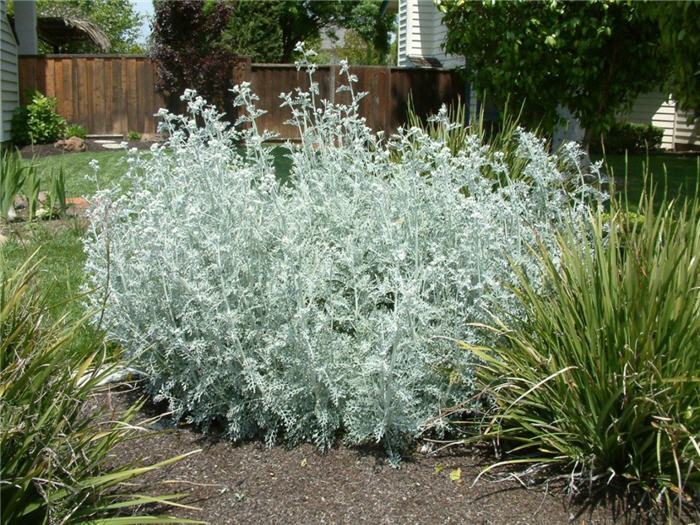| Botanical Name: Senecio cineraria | |
| Common Name: Dusty Miller Shrub |

-
Anatomy
-
Culture
-
Design
Plant Type
Perennial, Annual
Height Range
1-3'
Flower Color
Yellow
Flower Season
Summer, Fall
Leaf Color
Grey, Silver
Bark Color
n/a
Fruit Color
n/a
Fruit Season
n/a
Sun
Full
Water
Low, Medium
Growth Rate
Moderate
Soil Type
Unparticular
Soil Condition
Average, Poor, Well-drained, Dry
Soil pH
Neutral
Adverse Factors
n/a
Design Styles
English Cottage, Mediterranean, Spanish
Accenting Features
Showy Flowers, Unusual Foliage
Seasonal Interest
Summer, Fall
Location Uses
Entry, Perennial Border, Patio, Raised Planter
Special Uses
Container, Cut Flowers
Attracts Wildlife
n/a
Information by: Stephanie Duer
Photographer: Steve Mullany
Photographer: Steve Mullany
-
Description
-
Notes
There are several plants commonly called dusty miller, and this is one of them. Velvety gray to silver leaves have broad, roundish lobes, but may also be irregularly cut and feathery. Dusty miller is a popular foliage plant grown for its cool, silvery, woolly-felted leaves which provide excellent contrast to brighter summer flowers. Foliage is attractive throughout the growing season, often lasting well past the first frost in fall. Small, daisy-like, cream to yellow flowers usually do not appear in the first year. Flowers are insignificant and some just cut them off. Many of the cultivars rarely produce flowers. Use foliage for cut flower arrangements. Grows about 12 to 18 inches tall and wide.
Dusty Miller is a tender perennial that is winter hardy to USDA Zones 7-10. It is not cold hardy, and yet, it sometimes overwinters. Set seedlings/starter plants out at last frost date. Grow in average, well-drained soils in full sun to part shade. Tolerates full shade, but foliage color is best with some sun. Gardeners usually remove flower buds as they appear. Shear plants back if they become leggy.